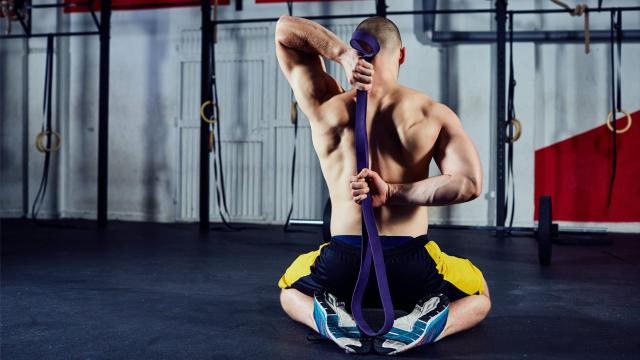Flexibility used to be a simple concept to understand: if you can do the splits or touch your hands behind your shoulder blades, you’re flexible. And if you’re not flexible, you have to do some stretches. But in recent years, the term mobility has become more popular, and it doesn’t mean exactly the same thing.
Mobility work involves more than stretching. You might use a foam roller, or do exercises that build strength at the same time as they give you a greater range-of-motion in your joints. You might do more dynamic stretches than static ones if you’re working on your mobility. And that’s because flexibility is part of mobility, but it’s not the same thing.
Experts’ definitions vary slightly, but the consensus seems to be this:
Flexibility is how far you can move a joint without injury. A passive stretch, such as trying to touch your toes while sitting with your legs on the floor, will test the limits of your flexibility, specifically how much your hamstrings can passively lengthen. It’s roughly equivalent to your passive range of motion.
Mobility, by contrast, is how far you can move a joint. Imagine a dancer who is standing up, and lifts her straight leg off the ground in front of her. If she can bring her foot high up off the ground, she’s got great mobility. But there’s more going on than just hamstring flexibility: She also has the strength, balance, and skill to allow her leg to take on that position.
Why mobility matters
Most things in life require mobility, not just flexibility. Whether you’re squatting with a barbell, or squatting to pick up a toddler, good mobility means you can bend your ankles, knees, and hips enough to keep your feet steady on the ground while holding the weight (the barbell or toddler) securely.
People with tight calf muscles often struggle to squat to an appropriate depth, and one step toward squatting better is getting more flexibility in your calves to improve the range of motion that your ankles can move through. But there’s more going on than just flexibility. A few other things that can affect your mobility:
- The structure of your joints. For example, some people’s hip sockets are more toward the front of their pelvis, some more toward the side. The exact position of muscles and their attachment points is not always the same from person to person. Your body’s structure determines the range of motion that is possible, even before considering flexibility.
- Stability. Sometimes a muscle needs to contract to stabilise a joint, and as a result, it can’t relax too much while still keeping your body safe and under control. Even though we sometimes think of strength and mobility as opposites, getting stronger can sometimes help mobility.
- More strength. Sometimes we may just not be strong enough to move our body into a certain position. The dancer in our earlier example can’t hit that position with only flexibility; she also has to strengthen her hip flexors to be able to lift the weight of her extended leg.
- Whether you’re warmed up or not. A warm muscle can stretch farther than a cold one, so it’s not unusual to feel stiff at the beginning of the workout and have better mobility toward the end.
How to get better mobility
The first step in working on your mobility is to determine what movements you need to do, and why. Then, seek a routine or ask a trainer for steps to take to improve that specific type of mobility.
For example, we have some suggestions here for improving your ankle mobility for squats. The first one isn’t a stretch at all; it’s a tip to use heeled shoes or plates. Even though that technically doesn’t make your ankle move any further in its range of motion, it lets you move more under control, which effectively increases the mobility of your hips to allow you to squat deeper. Our other tips include stretches and the use of a foam roller.
Foam rollers are popular for mobility because they stretch your muscles at the micro-level without requiring you to perform a specific, static stretching motion. After foam-rolling the muscles that need to be more pliable, you’ll probably notice that you can move them more easily. For this reason, it’s often done as part of a warmup.
Dynamic stretches can also help with mobility, and they work well as part of a warmup. Instead of sitting down and forcing a muscle into a stretched position, you’re using your body to move actively through a range of motion. Controlled articular rotations, or CARs, are one type of dynamic stretch that has you move a joint like the shoulder slowly through its range of motion. As you move your arm in bigger and bigger circles, you’re warming up the muscles involved, and working on strength and flexibility at the same time.
Static stretches have a place in a mobility routine, too. Even though flexibility is only one part of mobility, it’s an important part! You may or may not need static stretches for your mobility goals, but incorporating them can be an effective way to build your muscles’ ability to lengthen.

Leave a Reply
You must be logged in to post a comment.